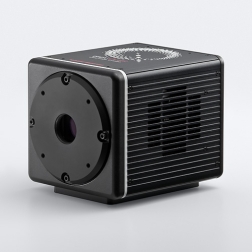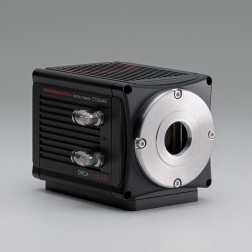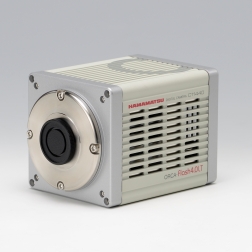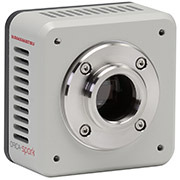The world’s first camera to incorporate the qCMOS image sensor. This camera achieves the ultimate in quantitative imaging.
Groundbreaking in concept and unprecedented in performance.
Since the 1980s, Hamamatsu Photonics has continued to develop high-sensitivity, low-noise cameras using its unique camera design technology and has always contributed to the development of cutting-edge scientific and technological research. Now, we are proud to release the ORCA-Quest 2 with ultimate performance. The C15550-22UP is the world’s first camera to incorporate the qCMOS image sensor and to be able to resolve the number of photoelectrons using a newly developed dedicated technology. The camera achieves the ultimate in quantitative imaging. For more information on the technology behind the ORCA-Quest 2, find the white paper attached to the product documents.
Four key features
1. Extreme low-noise performance
In order to detect weak light with high signal-to-noise, ORCA-Quest 2 has been designed and optimised to every aspect of the sensor from its structure to its electronics. Not only the camera development but also the custom sensor development has been done with latest CMOS technology, an extremely low noise performance of 0.27 electrons has been achieved.
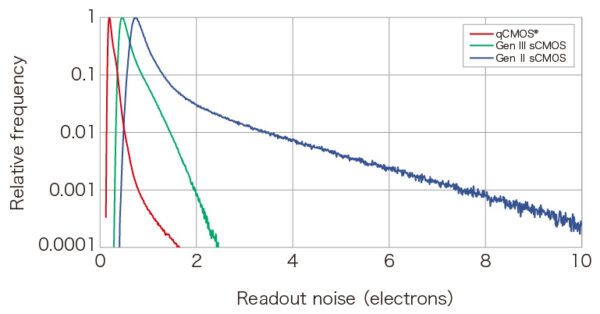
2. Realisation of photon number resolving (PNR) output
Light is a collection of many photons. Photons are converted into electrons on the sensor, and these electrons are called photoelectrons. “Photon number resolving*” is a method of accurately measuring light by counting photoelectrons. In order to count these photoelectrons, camera noise must be sufficiently smaller than the amount of photoelectron signal. Conventional sCMOS cameras achieve a small readout noise, but still larger than photoelectron signal, making it difficult to count photoelectrons. Using advanced camera technology, the ORCA-Quest 2 counts photoelectrons and delivers an ultra-low readout noise of 0.27 electrons rms (@Ultra quiet scan), stability over temperature and time, individual calibration and real-time correction of each pixel value.
* Photon number resolving is unique and quite different from photon counting (More precisely the method resolves the number of photoelectrons. However, since single photon counting instead of single photoelectron counting has been used for a comparable method in this field, we will use the term “photon number resolving”).
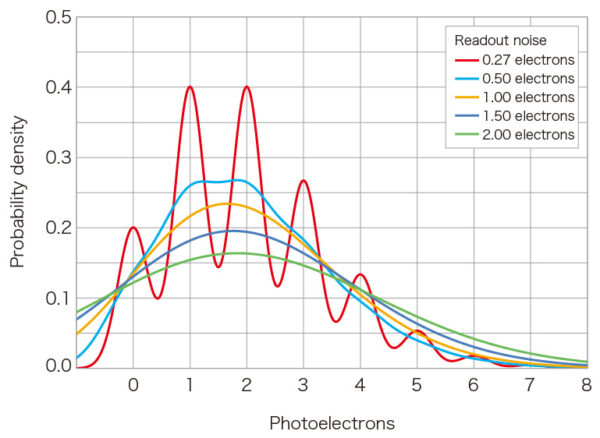
3. Back-illuminated structure and high resolution
High QE is essential for high efficiency of detecting photons and achieved by back-illuminated structure. In conventional back-illuminated sensors, crosstalks occur between pixels due to no pixel separation, and resolutions are usually inferior to those of front-illuminated sensors. The ORCA-Quest 2 qCMOS®’s sensor has back-illuminated structure for achieving high quantum efficiency, and trench structure in one-by-one pixel for reducing crosstalk.
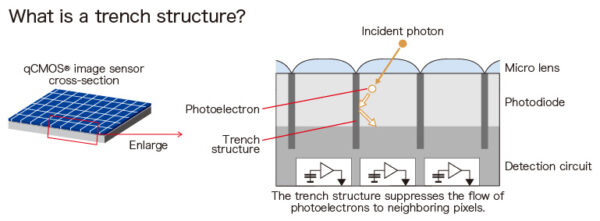
4. Realisation of a large number of pixels and high speed readout
Photon counting (PC) level images have typically been acquired using electron multiplication camera such as EM-CCD camera with about 0.3 megapixels. However, ORCA-Quest 2 can acquire not only PC level images but also photon number resolving images with 9.4 megapixels. In addition, it is not fair to compare readout speeds of cameras with different pixel number by frame rate. In such a case the pixel rate (number of pixels × frame rate), which is the number of pixels read out per second, is used. Until now, the fastest camera capable of SPC readout was the EM-CCD camera with about 27 megapixel/s, but the ORCA-Quest 2 enables photon number resolving imaging at about 47 megapixel/s, nearly twice as fast.
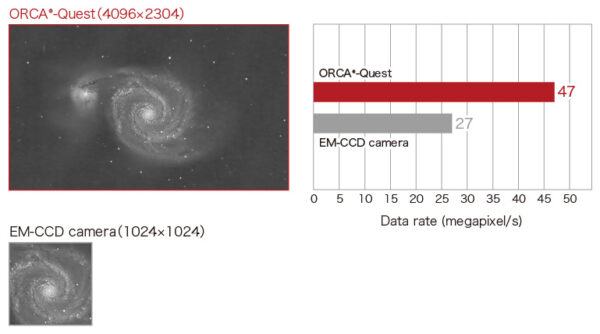
Applications:
- Lucky imaging.
- Raman Spectroscopy.
- Delayed fluorescence in plants.
PC recommendation
With the introduction of the ORCA-Quest 2, users are now able to stream 9.4 megapixel images to their computers 120 frames per second.
































